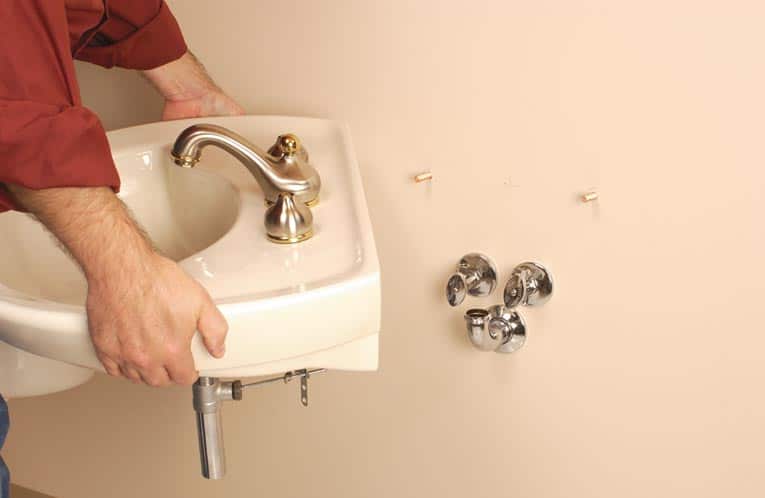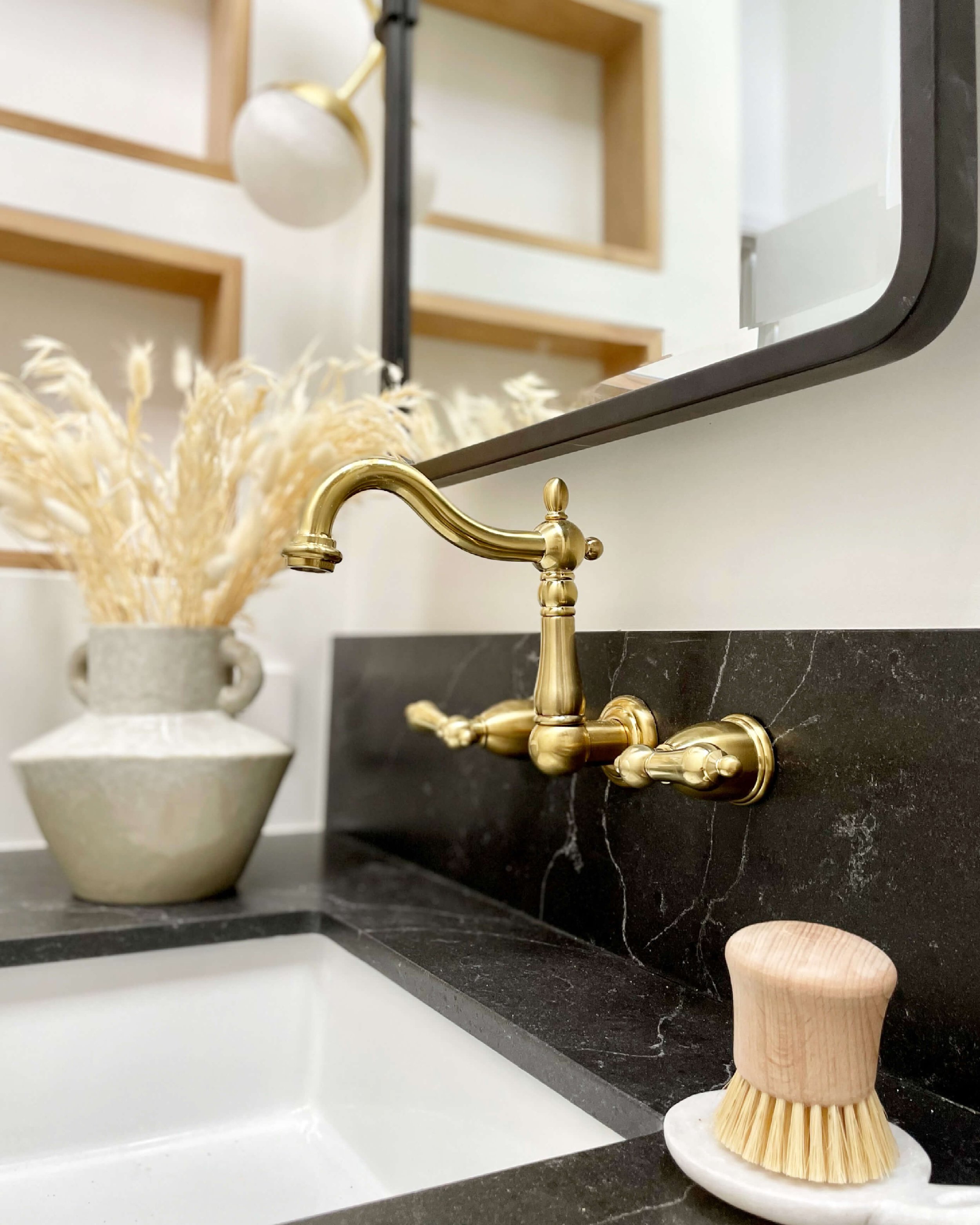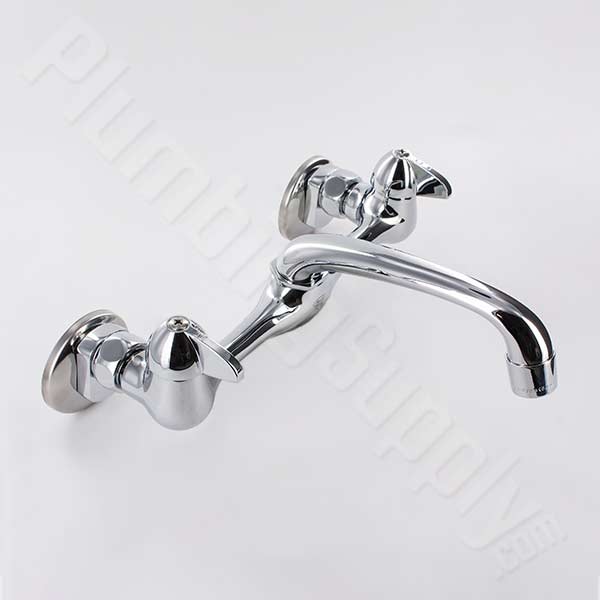When it comes to upgrading the functionality and aesthetics of a kitchen, a wall mount kitchen faucet can be a game-changer. Unlike traditional sink-mounted faucets, wall mount faucets are attached directly to the wall above the sink, offering a sleek and modern look while freeing up valuable counter space. This type of faucet isn’t just about looks, though—it also provides practical benefits like better cleaning access and versatile positioning. However, like any home improvement decision, there are several things to consider before installing one. From installation complexities to the types of materials used, it’s essential to weigh the pros and cons carefully.
One of the main reasons homeowners opt for wall mount kitchen faucets is the space-saving feature. In kitchens where counter space is a premium, removing the faucet from the sink or countertop offers a cleaner, less cluttered look. This type of faucet can also provide more flexibility in terms of sink placement. If you have a larger, farmhouse-style sink, a wall mount faucet ensures you have enough reach and coverage, making tasks like washing large pots or cleaning the sink much easier. Another advantage is the ability to install the faucet at a custom height, which can be more ergonomic depending on the user’s needs.

In terms of design, wall mount kitchen faucets come in a wide variety of styles, finishes, and materials. Whether you’re looking for a vintage look with brass or copper, or a more contemporary feel with sleek stainless steel or chrome, there’s something to match every kitchen’s aesthetic. Many models also offer additional features such as pull-down sprayers or pot fillers, which enhance functionality. Since the faucet is mounted on the wall, it can also become a focal point in the kitchen, adding to the overall visual appeal. However, it’s important to match the faucet style with other kitchen fixtures for a cohesive look.
Installation is one area where wall mount kitchen faucets require more planning and preparation than standard faucets. Because they are mounted on the wall, special plumbing arrangements may be needed, particularly if your current kitchen is not set up for this type of fixture. This could involve rerouting water lines, which might require the help of a professional plumber. Moreover, it’s important to ensure that the wall is sturdy enough to support the faucet’s weight. In some cases, additional structural support may be needed behind the wall, especially if you’re installing a heavy or high-end model.

One often overlooked but important consideration is the maintenance of a wall mount kitchen faucet. Since the faucet is attached to the wall, cleaning the area around it can be slightly more challenging compared to a sink-mounted option. Any water that splashes on the wall needs to be wiped down regularly to prevent damage or mold growth. The type of wall material also plays a role here; tile or waterproof surfaces are more resistant to water damage than standard drywall. However, on the flip side, the lack of a faucet base on the sink means one less area where dirt and grime can accumulate, making it easier to keep the sink itself clean.
When choosing a wall mount kitchen faucet, it’s essential to consider the spout reach and swivel range. Since the faucet is affixed to the wall, it needs to have adequate reach to cover the entire sink area. You don’t want a faucet with a spout that is too short, as it could make everyday tasks like filling pots or washing dishes difficult. Similarly, a faucet with a limited swivel range might restrict your ability to move the faucet from side to side, especially if you have a double-basin sink. Adjustable or extendable spouts can offer more flexibility in this regard, providing better control over water direction.

Water pressure is another factor that can be impacted by a wall mount faucet. Some homeowners report lower water pressure due to the height of the faucet or issues with the plumbing setup. It’s essential to check the water pressure specifications of the faucet before purchasing and consider whether your home’s plumbing system can accommodate it. In some cases, a plumber may need to adjust the water lines or install a pressure regulator to ensure optimal performance. High-quality faucets usually come with adjustable aerators, which can help manage water flow and pressure.
One of the significant advantages of wall mount kitchen faucets is their durability. Because they are mounted to the wall, they are less prone to wear and tear caused by constant movement or bumping, unlike sink-mounted faucets that may become loose or wobbly over time. High-quality models are made from durable materials like brass or stainless steel, which are corrosion-resistant and long-lasting. It’s also easier to find faucets with long warranties in this category, offering peace of mind that your investment will last.
Despite all the benefits, wall mount kitchen faucets do have a few downsides. They are generally more expensive to install due to the plumbing modifications required. Furthermore, if there’s ever an issue with the faucet or the plumbing behind it, repairs can be more complex and costly since the wall may need to be opened up to access the pipes. It’s important to weigh these potential complications against the aesthetic and functional benefits of the faucet before making a decision.

In terms of sustainability, wall mount kitchen faucets can be more eco-friendly than traditional faucets, particularly if you choose a model with low-flow technology. These faucets are designed to reduce water consumption without compromising performance, making them a great choice for environmentally conscious homeowners. Additionally, many faucets in this category are made from recyclable materials, adding to their green appeal.
Another important aspect to consider is compatibility with your existing kitchen setup. If you’re doing a full kitchen remodel, it’s easier to incorporate a wall mount faucet into the design from the start. However, if you’re simply upgrading your faucet, it’s crucial to ensure that your existing sink and plumbing can accommodate the change. In some cases, you may need to invest in additional parts or modifications, which can increase the overall cost of the project.
Temperature control can also be a concern with wall mount kitchen faucets. Some models may not offer as precise control over hot and cold water as their sink-mounted counterparts. This is especially true for older or more basic models, which may not have the advanced temperature-regulating features found in modern kitchen faucets. It’s important to choose a faucet that provides easy-to-use, intuitive controls to avoid potential scalding or discomfort when using hot water.

One additional factor to consider is the height of the faucet to your cabinets or shelves. Since the faucet is mounted on the wall, it’s important to ensure that it won’t interfere with any shelving or cabinetry above the sink. Some homeowners may need to adjust their kitchen layout or even remove a shelf to accommodate the height of the faucet. Measuring the area carefully before installation is crucial to avoid any surprises down the line.
Wall mount kitchen faucets are also a popular choice for people who want to create a more industrial or commercial-style kitchen. Their bold, utilitarian look pairs well with stainless steel appliances, open shelving, and minimalist design elements. However, they can be just as easily incorporated into a more traditional kitchen if you choose a faucet with the right finish and design details.
In terms of cost, wall mount kitchen faucets range widely depending on the brand, material, and additional features. While you can find more affordable models, many of the higher-end options can be quite pricey, especially when factoring in installation costs. It’s essential to set a budget and determine which features are most important to you before shopping around.
Last, don’t forget to factor in your style and preferences when selecting a wall mount kitchen faucet. Whether you prefer a modern, industrial look or something more traditional and cozy, there’s a faucet out there that will match your aesthetic. Be sure to choose a faucet that complements the overall design of your kitchen while providing the functionality you need for everyday tasks.

Common Mistakes to Avoid
When considering a wall mount kitchen faucet, several mistakes are easy to make, especially if it’s your first time installing one. The most common mistake is improper planning. Failing to measure the area accurately can lead to a faucet that doesn’t fit the sink or interferes with cabinets or shelving. It’s essential to carefully measure the space between the sink and the wall where the faucet will be installed.
Another mistake is ignoring plumbing requirements. Wall mount faucets often require rerouting of water lines, and assuming that existing plumbing will work can lead to costly modifications. Always consult with a plumber before purchasing to understand what’s involved. Skipping this step can result in low water pressure or even leaks.
Choosing the wrong faucet height is another common issue. A faucet installed too high or too low can make everyday tasks awkward or uncomfortable. It’s essential to consider the height of all users and the depth of your sink before making a final decision.

Neglecting the material of the wall where the faucet will be installed can also cause problems. Drywall or other non-waterproof materials can become damaged over time from splashes or leaks. It’s best to ensure that the wall is made of or covered with water-resistant material, like tile or waterproof backing.
Not considering future repairs is another oversight. Since wall mount faucets may require access behind the wall for repairs, ensure you have a plan for future maintenance. Installing an access panel can make future repairs easier and less costly, rather than having to tear into the wall.
Last, homeowners often underestimate the aesthetic impact. It’s easy to focus on functionality and forget how much of a visual focal point the faucet can become. Be sure to select a faucet style and finish that complements the rest of your kitchen’s décor.

What are the benefits of a wall mount kitchen faucet?
Wall mount kitchen faucets offer numerous benefits, including saving counter space, creating a modern and sleek look, and providing more flexibility with sink placement and faucet height. They also allow for easier cleaning around the sink since there’s no base to accumulate grime. Their durability, combined with high-quality materials, can make them a long-lasting addition to any kitchen.
Is it difficult to install a wall mount kitchen faucet?
Installing a wall mount kitchen faucet can be more complex than a traditional sink-mounted faucet. It often requires rerouting water lines and ensuring the wall is strong enough to support the faucet. Professional installation is usually recommended unless you’re experienced with plumbing. Additionally, making sure the faucet is at the correct height is crucial for usability.
Can I install a wall mount kitchen faucet in an existing kitchen?
Yes, you can install a wall mount kitchen faucet in an existing kitchen, but it may require some modifications. Plumbing lines may need to be rerouted, and the wall might need extra support. You should also consider the material of the wall behind the sink to ensure it’s water-resistant, especially if it’s not currently tiled.

Are there different styles of wall mount kitchen faucets?
Yes, wall mount kitchen faucets come in a variety of styles, finishes, and materials to suit different kitchen designs. Whether you’re aiming for a vintage look with brass or a modern, minimalist aesthetic with stainless steel, there’s a faucet to match every kitchen. Many also come with additional features like pull-down sprayers and adjustable spouts.
How do I maintain a wall mount kitchen faucet?
Maintenance for a wall mount kitchen faucet involves regular cleaning of both the faucet and the wall behind it. Because water can splash on the wall, it’s essential to wipe down the area to prevent mold or water damage. Choosing a faucet with a finish that resists water spots and fingerprints can make cleaning easier. Additionally, keeping the spout and aerator clean can help maintain water flow and pressure.
What should I consider when choosing a wall mount kitchen faucet?
When choosing a wall mount kitchen faucet, consider the spout reach, swivel range, material, and finish. The faucet needs to cover the entire sink area for functionality, and the style should complement your kitchen’s décor. Water pressure is another crucial factor, so be sure your plumbing can accommodate the faucet’s specifications. Finally, think about future maintenance and how easy it will be to access the faucet if repairs are needed.

Related Posts:
- Modern Kitchen Faucets
- Moen Ivory Kitchen Faucet
- Delta Dryden Kitchen Faucet
- Delta Kitchen Faucet Leaking Spout
- Modern Square Kitchen Faucets
- Delta Lewiston Kitchen Faucet Parts
- Delta Trinsic Kitchen Faucet Touch2O
- 3 Hole Kitchen Faucet With Soap Dispenser
- Water Ridge Pull Out Kitchen Faucet Installation
- Sensor Kitchen Faucets Home